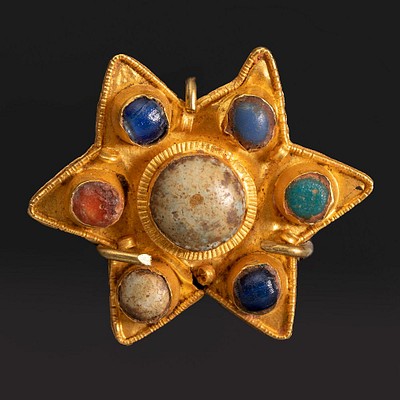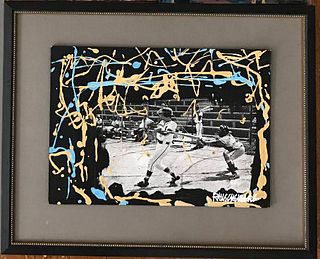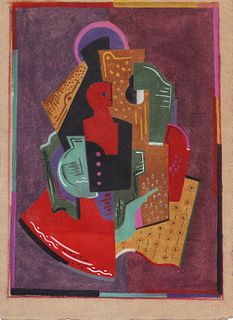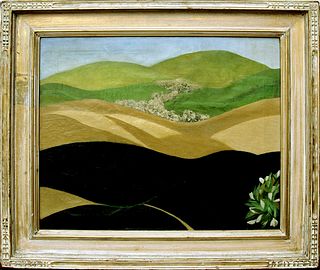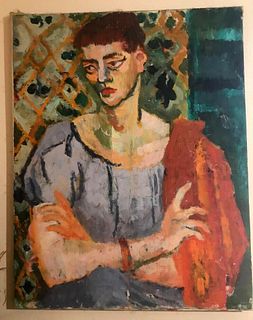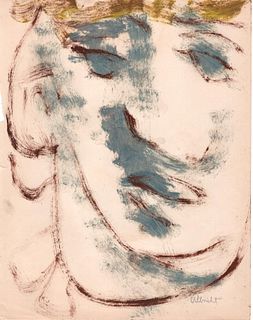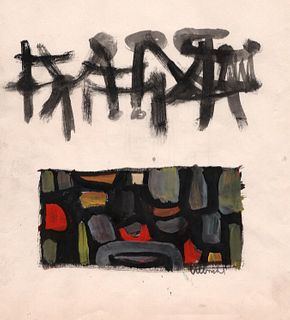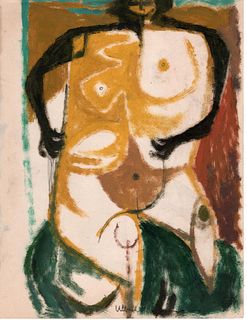ANTONIO BUJALANCE (Doña Mencía, Córdoba, 1934). "Neptune and Amphitrite". Oil on panel.
Lot 11
About Seller
Setdart Auction House
Carrer Aragó 346
Barcelona
Spain
Setdart Subastas was born in 2004 and is currently the first online art auction in Spain with solidity, prestige and reliability guaranteed by our more than 60,000 users. Setdart has a young, dynamic and enterprising team ready to successfully manage the purchase and sale of art works through custom...Read more
Estimate:
EUR€1,500 - EUR€2,500
$1,612.90 - $2,688.17
Absentee vs Live bid
Two ways to bid:
- Leave a max absentee bid and the platform will bid on your behalf up to your maximum bid during the live auction.
- Bid live during the auction and your bids will be submitted real-time to the auctioneer.
Bid Increments
| Price | Bid Increment |
|---|---|
| EUR€0 | EUR€10 |
| EUR€200 | EUR€25 |
| EUR€500 | EUR€50 |
| EUR€1,000 | EUR€100 |
| EUR€3,000 | EUR€200 |
| EUR€5,000 | EUR€500 |
| EUR€10,000 | EUR€1,000 |
| EUR€20,000 | EUR€2,000 |
| EUR€50,000 | EUR€5,000 |
About Auction
By Setdart Auction House
Dec 21, 2021
Set Reminder
2021-12-21 07:30:00
2021-12-21 07:30:00
America/New_York
Bidsquare
Bidsquare : Córdoba: 2,000 Years of Art
https://www.bidsquare.com/auctions/setdart-auction-house/c-rdoba-2-000-years-of-art-8049
Setdart Auction House sofia@setdart.com
Setdart Auction House sofia@setdart.com
- Lot Description
ANTONIO BUJALANCE (Doña Mencía, Córdoba, 1934). "Neptune and Amphitrite". Oil on panel. Signed in the lower right corner. Measurements: 200 x 110 cm; 220 x 150 cm (frame). Reinterpreted with a contemporary aesthetic language, Bujalance collects in this diptych one of the most characteristic representations of the goddess Amphitrite, next to her husband Neptune. The couple is arranged in the right area of the composition, directing a look of complicity to each other, with a chariot pulled by two horses next to them, and in the background a view of several temples, which seem to remind us of the Acropolis of Athens. It is interesting how the artist plays with the composition making use of geometric elements, combining cubic shapes and waves, which simulate the waves of the sea, thus creating a visual duality that plays with the exterior and the marine interior. It should be noted that despite the contemporaneity of the work, the author maintains a bright palette of light tones that is largely reminiscent of a Mediterranean aesthetic, in tune with the theme represented. Antonio Bujalance is an artist from Cordoba who began his artistic training at an early age. In 1948, when he was only fourteen years old, he was awarded a scholarship by the Diputación de Córdoba to study at the Escuela de Artes y Oficios Mateo Inurria in Córdoba. Later he continued his academic training at the Escuela Superior de Bellas Artes de Santa Isabel de Hungría, in Seville, although after completing his studies he returned to Cordoba. Finally, he completed his studies in 1968, at the Escuela Pintura Mural Contemporánea de San Cugat. Throughout his artistic career Bujalance has combined his career as a painter with his work as a teacher. He is currently represented in important private and public collections among which are: the Diocesan Museum of Cordoba, the City Council of Cordoba, the City Council of Doña Mencia (Cordoba), the Provincial Council of Cordoba, the Royal Academy of Cordoba, the Museum of Contemporary Landscape "Antonio Povedano", Priego de Cordoba, the Cajasur collection, and the Museum of Contemporary Ceramics, Burgos.
- Shipping Info
-
In-house shipping available. Please inquire at admin@setdart.com.
-
- Buyer's Premium



 EUR
EUR CAD
CAD AUD
AUD GBP
GBP MXN
MXN HKD
HKD CNY
CNY MYR
MYR SEK
SEK SGD
SGD CHF
CHF THB
THB








